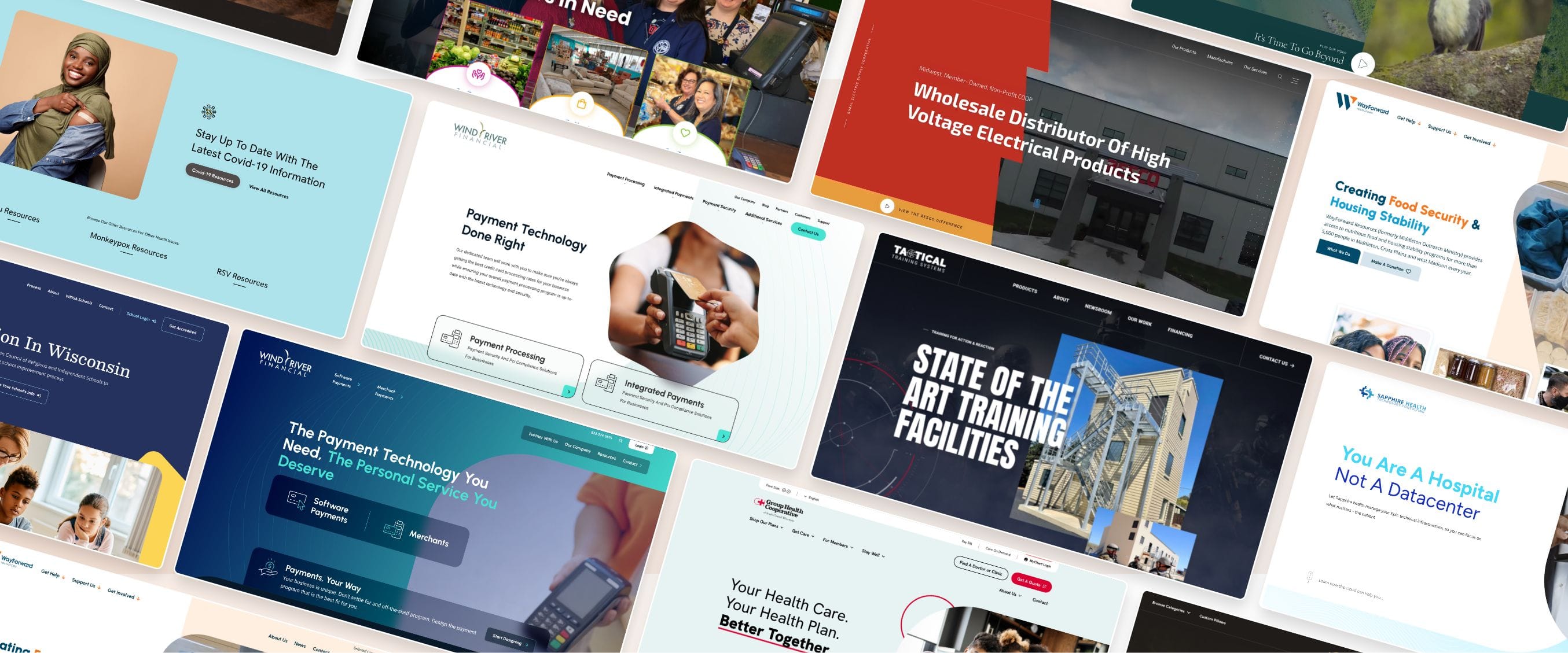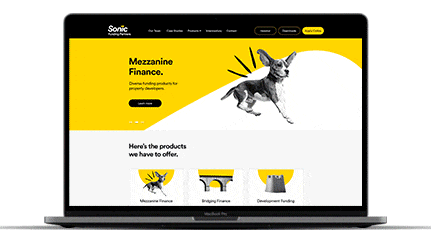Affordable Website Design Solutions for Medium Businesses
Leading Tips for Creating an Impactful Site Design That Transforms
To attain this, one need to take into consideration a variety of elements, consisting of comprehending the target audience, prioritizing customer experience, and optimizing for mobile platforms. The strategic usage of compelling call-to-actions and a well-defined aesthetic power structure plays an essential duty in guiding users through their trip.

Understand Your Target Market
Recognizing your target market is essential to reliable web site style, as it prepares for developing an appealing user experience. Recognizing that your users are, including their demographics, preferences, and behaviors, allows designers to customize the web site's material, layout, and performance to satisfy particular requirements.
Carrying out complete market research study is essential in this procedure. Studies, interviews, and analytics can provide useful understandings into user expectations and discomfort factors. By compiling this information, developers can create user characters that stand for various sectors of the audience, making sure that style decisions are notified and appropriate.
In addition, understanding the target audience helps in selecting suitable layout aspects such as color design, typography, and images that reverberate with customers. A website that speaks directly to its target market fosters a sense of connection and depend on, encouraging longer sees and greater conversion rates.
Eventually, a user-centered strategy to internet site style not just improves customer satisfaction yet also supports business objectives by driving involvement and loyalty. By focusing on the demands and choices of the target market, a web site can successfully offer its objective and achieve preferred end results.
Prioritize Individual Experience
To improve the general performance of a web site, focusing on user experience (UX) is important (Website Design). A well-designed UX makes sure that visitors can navigate the website easily, locate details quickly, and engage with content meaningfully. This results in enhanced user satisfaction and greater conversion rates
Begin by implementing instinctive navigating. Menus must be realistically structured, allowing customers to locate vital locations of the website with very little effort. Consistency in style components, such as color design and font styles, promotes knowledge, which is vital for maintaining user involvement.
Additionally, take into consideration the loading rate of your internet site. A hold-up of simply a couple of secs can lead to considerable drop-offs, as individuals are less most likely to wait for a slow-loading web page. Streamlining pictures and optimizing code can enhance performance and retain site visitors.
Furthermore, quality in material presentation is important. Use concise, appealing language and separate text with visuals to enhance readability. By prioritizing individual experience, you not just develop a more pleasurable atmosphere for site visitors but likewise enhance your brand's integrity. Ultimately, a concentrate on UX is a financial investment in the lasting success of your web site.
Optimize for Mobile Devices
Optimizing for mobile tools is critical in today's electronic landscape, where an enhancing variety of customers accessibility websites with smart devices and tablet computers. A mobile-friendly style not only enhances user experience however likewise plays a considerable duty in enhancing internet search engine positions. To achieve this, it is essential to take on a responsive style that automatically gets used to various screen dimensions and alignments.

Filling rate is another essential variable; mobile users are normally less client and expect quick access to details. Optimize images and utilize internet browser caching to improve efficiency. Examination your site on multiple gadgets and display resolutions to identify and fix any kind of prospective use concerns. By prioritizing mobile optimization, you make certain that your web site remains competitive and effectively involves a wider audience.
Use Engaging Call-to-Actions
A web site's performance frequently depends upon its capacity to lead visitors toward wanted activities, making engaging call-to-actions (CTAs) important elements of style. CTAs serve as the pivotal points that direct users to involve with the site, whether that means purchasing, signing up for a newsletter, or downloading a source.
To create effective CTAs, clearness is vital. Usage succinct language that plainly connects the activity you want the individual to take. Phrases such as "Get Begun," "Subscribe Free," or "Store Now" not only convey urgency yet also remove have a peek here ambiguity. The positioning of CTAs is equally crucial; they need to be purposefully placed throughout the web page to guarantee they are conveniently noticeable, specifically in high-traffic areas.
Additionally, take into consideration making use of directional hints, such as arrowheads or photos, to assist individuals toward these buttons. By concentrating on these elements, businesses can dramatically improve individual interaction, driving conversions and inevitably achieving their internet site's goals.
Concentrate On Visual Hierarchy
Effective site design relies greatly on a well-structured visual hierarchy that guides users via material perfectly. By arranging elements in a manner that prioritizes info, developers can improve customer experience and help with decision-making. This involves using dimension, shade, contrast, and spacing tactically to attract attention to one of the most vital parts of a page.
Using bigger font styles for headings and subheadings establishes a clear difference in between different sections, enabling customers to scan material effortlessly. Additionally, using different shades for buttons and calls-to-action can record individual interest and encourage communication. Whitespace is one more essential part; it protects against mess and allows individuals to concentrate on essential messages without disturbances.
Images and additional resources graphics should complement the text while additionally adhering to the well-known power structure, enhancing the overall message (Website Design). Consistency in style aspects, such as shade plans and typography, more strengthens the aesthetic pecking order, making navigating intuitive

Conclusion
To conclude, reliable internet site layout necessitates a thorough understanding of the target audience, prioritization of customer experience, and mobile optimization. The tactical use compelling call-to-actions and a distinct visual hierarchy further enhances user involvement. By implementing these concepts, sites can attain greater conversion rates, guaranteeing that design elements not just attract visitors yet also promote seamless navigation and interaction. Eventually, a well-executed site layout acts as a critical element in driving customer actions and accomplishing company objectives.